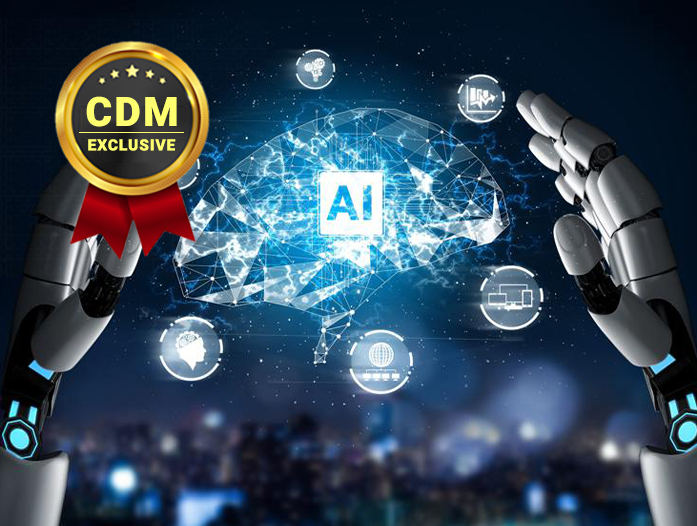- Reimagining Security for the AI Era
- Are backyard solar panels legit? I tested one, and here's how it saved me $30 a month
- Huawei steps up AI chip race with Ascend 910D, targeting Nvidia’s high ground
- Innovative OT Security Solutions by Cisco at RSAC 2025
- La gran apuesta de Bank of America por la IA, a examen
Is AI At the Edge Right for Your Business And Three Tips To Consider

By Camille Morhardt, Dir Security Initiatives & Rita Wouhaybi, Senior Principal AI Engineer, IoT Group, at Intel
As Artificial Intelligence (AI) matures, adoption continues to increase. According to recent research, 35% of organizations are using AI today, with 42% exploring its potential. While AI is well understood and heavily deployed in cloud, it remains nascent at the edge and has some unique challenges. Over the last several years, Rita Wouhaybi, Senior Principal AI Engineer at Intel, has designed and written AI algorithms for a variety of industrial use cases, including Audi (to help them transform their factory floor into an intelligent edge). In this article, we discuss how organizations can evaluate if AI at the edge is right for them and offers some tips to consider when scaling the technology.
A lot of people use AI throughout the day – from navigating in cars to tracking steps to speaking to digital assistants. Even though a user accesses these services often on a mobile device, the compute results reside in cloud usages of AI. More specifically, a person requests information, and that request is processed by a central learning model in the cloud which then sends results back to the person’s local device.
AI at the edge is less understood and less frequently deployed than AI in the cloud. From its inception, AI algorithms and innovations relied on a fundamental assumption; that all data can be sent to one central location. In this central location, an algorithm has complete access to the data. This allows the algorithm to build its intelligence like a brain or central nervous system with full authority on compute and data. But AI at the edge is a different beast. It distributes the intelligence across all the cells and nerves. By pushing intelligence to the edge, we give these edge devices agency. That is essential in many applications and domains such as healthcare and industrial manufacturing.
There are three primary reasons to deploy AI at the edge. First, some organizations that deal with PII (personally identifiable information) or sensitive IP (intellectual property) prefer to leave the data where it originates – in the imaging machine at the hospital, or on a manufacturing machine on the factory floor. This can reduce the risk of “excursions” or “leakage” that can occur when transmitting data over a network.
Second is a bandwidth issue. Shipping large quantities of data from the edge to the cloud can clog the network and in some cases is impractical. It is not uncommon for an imaging machine in a health setting to generate files that are so massive that it is either not possible to transfer them to the cloud or would take days to complete such a transfer. It can be more efficient simply to process the data at the edge, especially if the insights are targeted to improve a proprietary machine. In the past, compute was far more difficult to move and maintain, warranting a move of this data to the compute location. This paradigm is now being challenged, where now the data is often more important and more difficult to manage, leading to use cases warranting moving the compute to the location of the data!
The third reason for deploying AI at the edge is latency. The internet is fast, but it’s not real-time. If there’s a case where milliseconds matter, such as a robotic arm assisting in surgery, or a time-sensitive manufacturing line, an organization may decide to run AI at the edge.
But what are some of the unique challenges of deploying AI at the edge and what tips should you consider helping address those challenges? Here are three:
- Good Versus Bad Outcomes – Most AI techniques use large amounts of data to train a model. However, this often becomes more difficult in industrial use cases at the edge, where most of the products manufactured are not defective, and hence tagged or annotated as good. The resulting imbalance of “good outcomes” versus “bad outcomes” makes it more difficult for models to learn to recognize problems.
Pro Tip: Pure AI solutions that rely on classifying data without contextual information are often not easy to create and deploy, because of a lack of labeled data and even the occurrence of rare events. Adding context to AI – or what is referred to as a data-centric approach – often pays dividends in accuracy and scale of the final solution. The truth is, while AI can often replace mundane tasks that humans do manually, it benefits tremendously from human insight when putting together a model, especially when there isn’t a lot of data to work with.
Getting commitment up front from an experienced subject matter expert to work closely with the data scientist(s) that is building the algorithm gives AI a jumpstart on learning. When working with Audi, we spent just a few days with a welding expert and created an algorithm that models the process based on what is happening in the data. As a result, the model went from 60% accuracy to 94% accuracy.
- AI is Not Magic – There are often many steps that go into an output. For example, there may be many stations on a factory floor, and they may be interdependent. The humidity in one area of the factory during a process may affect the results of another process later in the manufacturing line in a different area. People often assume AI can magically piece together all these relationships. While in many cases it can, it will also likely require a lot of data, a long time to collect the data, and results in a very complex algorithm that does not support explainability and updates.
Pro Tip: AI cannot live in a vacuum. Capturing those inter-dependencies will push the boundaries from a simple solution to a solution that can scale over time and different deployments
- Lack of Buy In – It’s difficult to scale AI across an organization if a bunch of people in the organization are skeptical of the benefits of it.
Pro Tip: The best (and perhaps only) way to get broad buy in is to start with a high value, difficult problem, then solve it with AI. At Audi, we considered solving for how often to change the electrodes on the welding guns. But the electrodes were low cost, and this didn’t eliminate any of the mundane tasks that humans were doing. Instead, they picked the welding process, a universally agreed upon difficult problem for the whole industry and improved the quality of the process dramatically through AI. This then ignited the imagination of engineers across the company to investigate how they could use AI in other processes improving efficiency and quality.
Deploying AI at the edge can help organizations and their teams. It has the potential to transform a facility into a smart edge, improving quality, optimizing the manufacturing process, and inspiring developers and engineers across the organization to explore how they might incorporate AI or advance AI use cases to include predictive analytics, recommendations for improving efficiency or anomaly detection. But it also presents new challenges. As an industry, we must be able to deploy it while reducing latency, increasing privacy, protecting IP, and keeping the network running smoothly.
About the Author
 With over a decade experience starting and leading product lines in tech from edge to cloud, Camille Morhardt, is the Director, Security Initiatives & Communications at Intel Corporation. She is also the host of “What That Means,” Cyber Security Inside podcast and part of Intel’s Security Center of Excellence. Rita Wouhaybi is a senior AI principal engineer with the Office of the CTO in the Network & Edge Group at Intel Corporation. She leads the architecture team focused on the Federal and Manufacturing market segments.
With over a decade experience starting and leading product lines in tech from edge to cloud, Camille Morhardt, is the Director, Security Initiatives & Communications at Intel Corporation. She is also the host of “What That Means,” Cyber Security Inside podcast and part of Intel’s Security Center of Excellence. Rita Wouhaybi is a senior AI principal engineer with the Office of the CTO in the Network & Edge Group at Intel Corporation. She leads the architecture team focused on the Federal and Manufacturing market segments.

